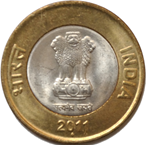THERE ARE MANY PARAMETERS BY WHICH YOU CAN CONSIDER ANY COIN A RARE COIN
Make a habit of looking at your coins. If you know what an everyday coin looks like, you are more likely to notice when one is a little different. Set aside those that look different until you have time for a closer examination.
Whether you are an experienced coin collector or not, rare coins are an exciting discovery that can prove to be very valuable. Not only are rare coins an interesting find, but they are also a profitable way to make the most of your pocket change
Coin values will depend on several factors. Some of which include:
- The condition of the coin- mint or near mint condition hold the most value
- How rare the coin is
- The demand for the coin
- Age: The year in which a particular coin is minted or a note is printed holds high importance as coins that date back a century or more can be of commercial value.

-
- Metal Used: This point particularly holds up for the coins and not the notes, coins that are made up of precious metals such as Gold Or Silver are definitely of some commercial value due to the value of the metal involved apart from the rarity factor.

- Denomination: The denomination of a coin or currency note is important because the higher denominations usually stay in circulation for more time and are also printed or minted in relatively smaller quantities. The denominations stack up higher in number as the economy grows for example a one rupee coin minted in 2012 is not as rare as a one rupee coin minted in 1980 as shown in the first picture. Here is another picture of a rare one rupee currency note printed before the Indian independence.

- Mint: Some mints have been functional for a relatively smaller period and thus the coins minted there are much rarer than the others. One such example Is the copper mint of Akbar in Haridwar. The copper coins minted there were used for common exchange back then in Garhwal which was then under the rule of King Sehajpal. But these copper coins now are rare and very valuable.

Suppose you have old coins in your hand
step 1. Examine the Coin as a Whole
This includes the front and back, the portrait, and its overall appearance from afar
step 2. Look Over the Lettering
The lettering of a coin is one easy location to discover rarities. Examine each one carefully, paying extra attention to anything that strikes you as odd.
step 3. Inspect the Mintmark
The date and mintmark are the easiest way to diagnose valuable rare coins. Errors in these two key areas can still be found in circulation, and they could score you a fortune
step 4. Check the Die Rotation
Die rotation refers to the angle at which the coin turns from top to bottom. The rotation should be even, with both sides matching up if you flip over the coin. Die rotation is closely adhered to during the creation process, so if you notice any odd rotations, you could have a rare coin. The larger the variation, the rarer and, thus, the more valuable the coin.


No comments:
Post a Comment